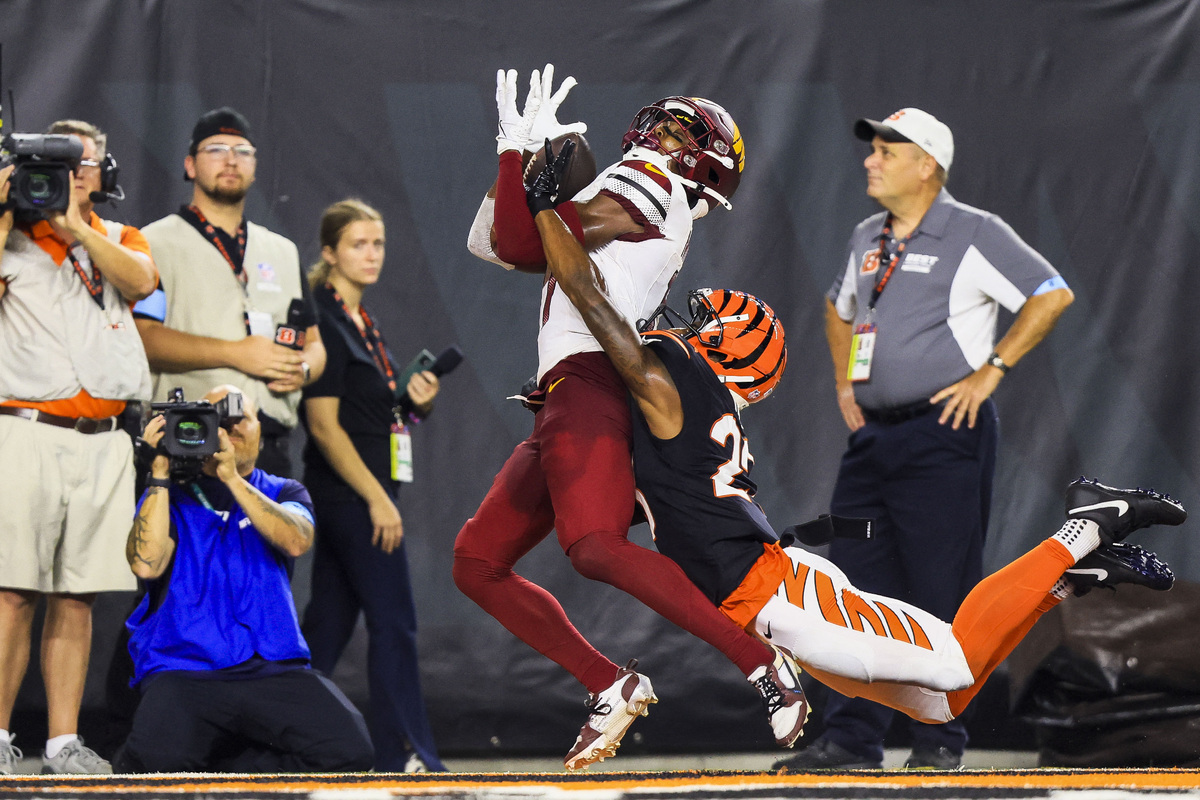You are viewing 1 of your 1 free articles
Measuring the effects of concussion

Wigan Warriors’ Michael McIlorum receives treatment before leaving the pitch for a concussion assessment Action Images/Craig Brough
Concussion injuries in sport are getting a lot of buzz these days, but what do we really know about how to measure these traumatic brain injuries? If we were able to understand and quantify the extensiveness of the injury in a standardized way, medical professionals might speed concussion recovery and make better decisions about return to sport. Therefore, researchers at the University of Calgary investigated which measureable parameters changed after concussion in a population at the highest risk – youth participating in contact/collision sports.
The unique thing about concussion injuries is that they vary in their severity and symptomology between individuals. It’s difficult to standardize the effects and level of functional loss, as each person experiences it differently. That said, headache is the most common complaint after head injury, followed by dizziness, upset stomach, and neck pain(1). Therefore, the researchers in Calgary selected measures of cervical spine function, vestibule-ocular function, dynamic balance, and tasks of divided attention to administer before and after suffering a concussion.
This study was part of a larger cohort study and enabled the researchers to intensively screen subjects prior to their participation in an elite youth hockey league. Physical therapists, well trained in the testing protocols, administered baseline assessments to all participants during the preseason. This testing included a questionnaire of current health status and medical history. In addition, subjects rated their pre-season symptoms on a 0-10 scale. The therapists also conducted an extensive cervical evaluation measuring range of motion in all planes, strength and endurance. Moreover, they administered tests of vestibulo-occular function, active balance, and attention while doing multiple tasks.
Cohort studies are difficult. Frequently a portion of the cohort misses out on one or more aspects of the study. Many times they are lost to follow up altogether. This study proved no different. Of the original 559 athletes enrolled in the study, 97 suffered a concussion during the following hockey season. Nearly 75% of those completed the post-concussion evaluation, yet only 80% of those attended the preseason evaluation. Therefore, the resulting number of subjects was 55 athletes.
As expected, the number of symptom complaints increased after concussion (see table 1). Post-concussion evaluation also revealed limitation in cervical range of motion in nine of the subjects. The results of cervical flexion rotation and cervical flexion endurance tests showed more positive results and elicited more pain after suffering a concussion. The post-concussion head perturbation tests showed lower scores and thus impaired performance and the muscles in the cervical spine were significantly weaker. All other tests showed no change or improvement from the preseason values.
Table 1: Preseason versus postseason complaints
| Symptom | Number or complaints preseason | Number of complaints post injury |
| Neck pain (n=55) | 16 | 26 |
| Headache (n=55) | 17 | 35 |
| Dizziness (n=48) | 10 | 23 |
Interestingly, roughly one-third of those with concussions had complaints of neck pain, headache, and dizziness during the preseason evaluation. This brings up the question of minor undetected prior trauma or concussion.
Practical implications
Of all parameters measured, cervical spine function demonstrated the most change from baseline after suffering a concussion. Up until now, most attribute the lingering post-concussion headache to head trauma. However, this study illuminates the fact that neck trauma may play a greater role in the subsequent symptoms, and post-concussion headaches may have a cervicogenic origin. (For more on diagnosing and treating this type of headache, see physio Pat Gilliam’s excellent article here.)
Another interesting finding was that the complaints of dizziness didn’t correlate with the performance on tests of vestibulo-occular function or dynamic balance. In other words, the subjective sensation of dizziness didn’t impair function. This led the authors to suppose that a state of pre-existing sensorimotor dysfunction may predispose the athlete to feel dizzy.
While this study had a limited number of participants and did not tease out gender or age as possible covariates, it points out the narrow focus and assumptions that sometimes cloud clinical judgment. Based on these findings alone, it behooves therapists and physicians to implement detailed cervical spine evaluations on those who experience a concussion.
Reference
- JOSPT. 2018 Dec;48(12):974-81
Newsletter Sign Up
Subscriber Testimonials
Dr. Alexandra Fandetti-Robin, Back & Body Chiropractic
Elspeth Cowell MSCh DpodM SRCh HCPC reg
William Hunter, Nuffield Health
Newsletter Sign Up
Coaches Testimonials
Dr. Alexandra Fandetti-Robin, Back & Body Chiropractic
Elspeth Cowell MSCh DpodM SRCh HCPC reg
William Hunter, Nuffield Health
Be at the leading edge of sports injury management
Our international team of qualified experts (see above) spend hours poring over scores of technical journals and medical papers that even the most interested professionals don't have time to read.
For 17 years, we've helped hard-working physiotherapists and sports professionals like you, overwhelmed by the vast amount of new research, bring science to their treatment. Sports Injury Bulletin is the ideal resource for practitioners too busy to cull through all the monthly journals to find meaningful and applicable studies.
*includes 3 coaching manuals
Get Inspired
All the latest techniques and approaches
Sports Injury Bulletin brings together a worldwide panel of experts – including physiotherapists, doctors, researchers and sports scientists. Together we deliver everything you need to help your clients avoid – or recover as quickly as possible from – injuries.
We strip away the scientific jargon and deliver you easy-to-follow training exercises, nutrition tips, psychological strategies and recovery programmes and exercises in plain English.






